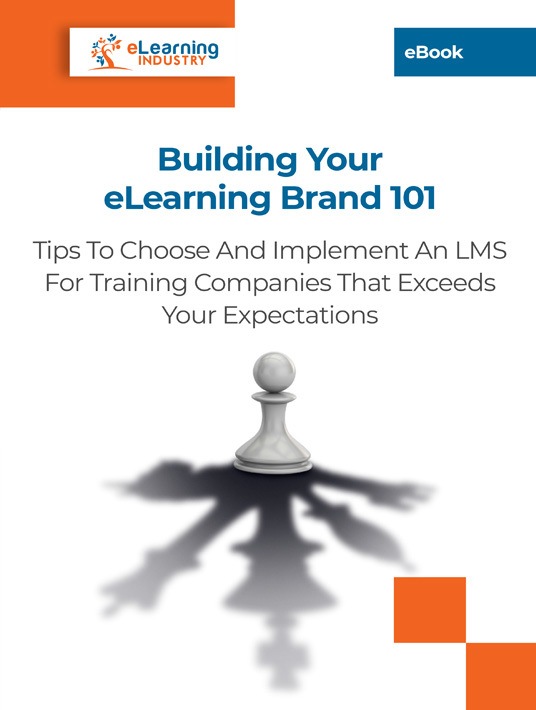Boost Your Online Training Course Sales
You bring prospects to your online training course landing page, luring them in with high-quality content bundles and skill-building certification programs. All your glowing testimonials and virtual sales pitches are true. So, why are they not converting into paying customers? What’s stopping them from clicking that buy button on your landing page? Your eCommerce tools—or lack thereof—may be the culprit. Checking out shouldn’t be stressful or lead them to believe their information has been compromised. These 7 insider secrets can help you boost your online training course sales by implementing an LMS for training companies with eCommerce integrations.

1. Verify Compatibility To Avoid Potential Sales Roadblocks
Most LMSs for training companies have tech partners they pair up with. The platform usually has a list of compatible eCommerce vendors or payment sites. You can either choose an LMS that’s already aligned with your preferred sales tools or check out the vendor's site to see which tools mesh with their Learning Management System. It’s crucial to verify that all your eCommerce platforms play nice with each other to avoid sales roadblocks later. For example, customers may encounter a payment error at the end of the checkout process.
2. Determine The Ideal Pricing Model For Your Online Training Course Sales
Pricing structures vary when it comes to LMSs for training companies with eCommerce integrations. Some open the entire field and allow you to set flexible pricing options ranging from subscriptions and memberships to content bundles. But others are limited to online training course signups or enrollments. Decide the ideal pricing model for your business so that you can narrow the LMS search scope. Other eCommerce features to consider are coupons, discounts, and payment plan management as well as sales tracking. You need robust eCommerce reporting tools to monitor conversions, subscriptions, and engagement.
3. Ask The eCommerce Vendor About Data Security
The last thing you need is client/learner data falling into the wrong hands. They’re entrusting you with their credit card info or bank details as well as their personal contact details. Thus, data security is paramount when implementing a new LMS for training companies. Verify that the eCommerce vendor has advanced data protection measures in place and frequently upgrades their technology. That said, data security should not come at the cost of delayed payments. The eCommerce vendor must be able to quickly process the transaction via third-party gateways and keep information secure every step of the way.
4. Create A Storefront Using Trusted eCommerce Vendors
You can either set up a storefront in the LMS or integrate a third-party eCommerce vendor. The latter is a great option for training companies who already have an established base. For example, you’ve sold online training courses on Shopify or WordPress and simply need to set up shop in your new LMS. If the plan is to create a new account with an eCommerce vendor to leverage it for your LMS, some vendor vetting is in order. Verify their credentials, read online reviews, and evaluate their encryption measures. Which fees are involved, and can you customize your storefront eLearning template to reflect branding? Does the site already have a loyal following that will help you expand your reach? One of the perks of choosing a third-party storefront versus an LMS storefront is better exposure. Prospects who peruse their online training course catalog might stumble on your product and enroll, even if they aren’t familiar with your brand.
5. Choose The Best Payment Gateway For Your Online Training Business
There is a variety of payment processing sites to choose from, including PayPal, Authorize.net, and Stripe. Do your homework to see which service providers have the best fees based on your business model. For example, one platform only charges a 1,5% processing fee for every transaction, but there’s also a $5 admin fee they tack on to every purchase. This could get costly if you have a subscription-based model versus content bundles as you’ll have a higher volume of smaller transactions instead of a few high-ticket purchases.
6. Enable Auto-Enrollment For Quick Online Learner Access
Online learners expect immediate access to the online training course. Gone are the days of welcome emails with embedded links hours after the purchase. Make certain your training company LMS with eCommerce integrations supports auto-enrollment. Users immediately start the online training course and reap the benefits. This also streamlines signups for your team so that they can focus on bringing more online learners into the fold.
7. Verify SSO And In-App Purchasing Features
Ideally, users shouldn’t have to visit an external site to purchase your product. Nor should the LMS redirect them to a third-party platform to enroll in your online training course. SSO (Single Sign-On) allows clients and individual learners to log in to the Learning Management System and eCommerce platforms. They can also purchase the online training content, choose a subscription or enroll in your online training course directly within the LMS. Even though multiple vendors/integrations are involved, users enjoy a seamless CX.
First and foremost, the LMS for training companies must make the checkout process hassle-free. Users want to sign up for your online training course or purchase content bundles and memberships right now. They’ve already weighed their options and decided on your training company. But payment processing errors and confusing storefront controls might force them to click away before they convert into paid customers. Choose LMS integrations that eliminate all those hurdles so that they can enroll with ease. Test the tool from the front-end to make sure it’s intuitive for clients. Run a sample purchase to see if there are any obstacles or red flags that might hurt your sales, such as unencrypted web pages that make users doubt their data security.
Finding the ideal LMS for your organization is a must when you need to employ an effective online training strategy with maximum ROI. The eBook Building Your eLearning Brand 101: Tips To Choose And Implement An LMS For Training Companies That Exceeds Your Expectations will help you discover everything you need to know when opting for an LMS for training companies in order to achieve your business objectives.








